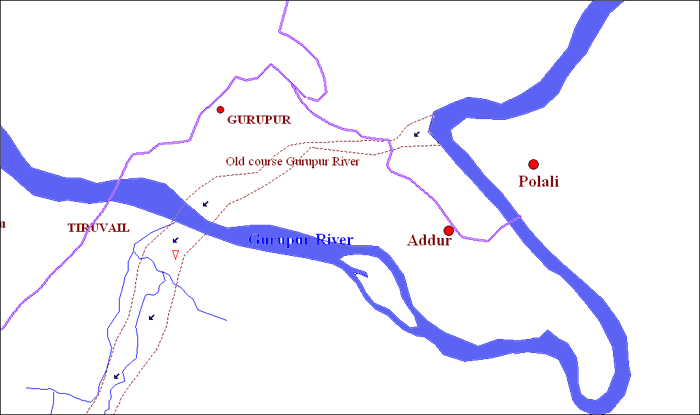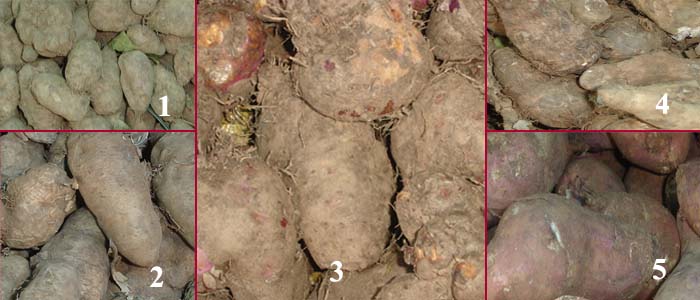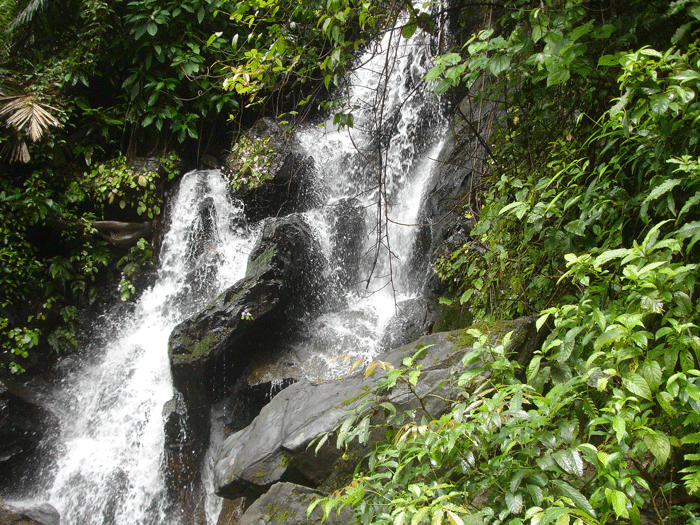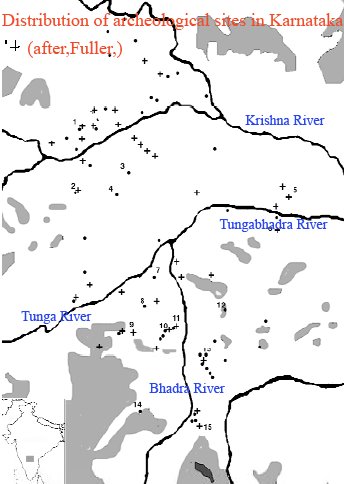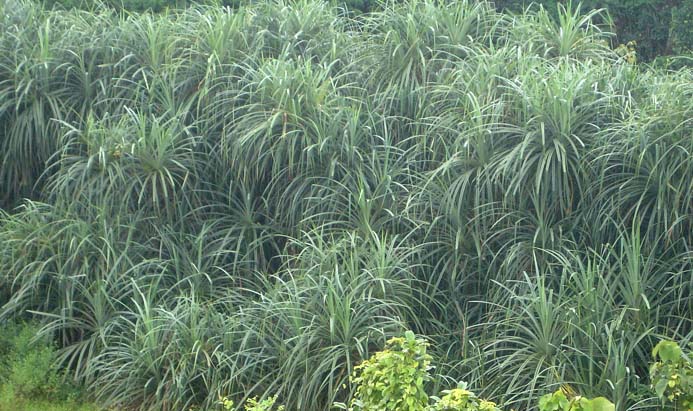Who were the Neolithic tribes that inhabited south India in terms of ethnicity?
The archeological pre-history of human evolution is conventionally divided into (a)
Paleolithic [=Old Stone Age] representing age characterized by use of primitive stone tools by the early human beings and (b)
Neolithic [=New Stone Age] representing use of polished or refined stone tools like stone axes. In some areas an intermediate ‘
Mesolithic’ [=Middle Stone Age] age has been recognized between the two.
Paleolithic usually refers to pre-LGM (
Last Glacial Maxima, ca. 18,000-10,000 years ago) or prior to the Last major Ice Age on the Earth. Neolithic usually refers to post LGM evolution that heralded domestication of animals, farming, agriculture, and establishment of villages and also development of crafts such as pottery and weaving etc. Neolithic Age has been recognized at slightly different time periods at different places.
In the southern India, Paleolithic stone tools have been reported in association with volcanic deposits (formed out of the aerial spread of emanations from the massive Mt Toba volcanic eruption, in Sumatra, ca.74, 000 years before present) from the archeological excavations carried out in Jwalapuram (Kurnool district, Andhra Pradesh) and other areas. These suggest the existence of early human tribes in southern India since that estimated age.
Similarly, archeological evidences for the existence of Neolithic civilization have been excavated in the formations dated ca. 2800 to 1200 BC from several sites spread in Krishna and Tungabhadra river basins of Gulbarga (Budhihal, Watagal), Bellary (Sanganakallu, Hiregudda, Tekkalakota) and Bijapur districts.
Archeological data on Karavali sites are not reported adequately so far either due to paucity of studies or due to destruction by natural elements such as heavy rainfall, changes in river channels and fluctuation of sea levels.
The archeological excavations studies by Paddaya, Korisettar and others in peninsular India (parts of Eastern Karnataka and Andhra Pradesh) followed up with archeo-botanical studies by Dorian Fuller and others indicate a pastoral (ash mound culture) and agricultural society that was growing millets, tubers and pulses like urd, green gram, horse gram with minor wheat and, barley. The occurrence of rice granules associated with younger formations suggests that rice was introduced later around ca.800 BC in the area.
The above data reveals that the early human beings settled in South India since Paleolithic Ages and evolved agricultural-farming inhabitations during the Neolithic Age. The inhabitants grew pulses (Tovar, green gram, horse gram and black gram), millets, tubers with minor wheat and barley. The ethnic identity of these early Indians corresponds with the Early Munda lingual-cultural substrata described in the earlier posts. Secondly, the rice was generally unknown to them until it was introduced by early Dravidian immigrants around 800 BC or later.
Basic lingual-ethnic fabric of IndiaIn spite of the fact that the present generation of Indians are admixtures of several ethnic groups, the study of constituent ethnic groups may be of some interest to those who look for our early roots.
Basically, three major lingual-ethnic groups have been recognized in India: (1) Austro-Asiatic (or Munda) (2) Dravidian and (3) Indo-Aryan.
Of these, the Austro-Asiatic/Munda ethnic group that arrived and settled in India sometime during early Paleolithic apparently evolved into several lines of hunting-farming-artisan communities, as understood from the spread of extant and remnants of Munda group of languages and cultures.
Early views held that Indo-Aryans invaded the country that was dominated by Dravidian natives. Subsequently, Prof. Michael Witzel and others, based on the linguistic analyses of Vedas proposed that early Dravidians also migrated into India like Indo-Aryans. Similarity of Indo-Aryan Vedic stanzas with those of Iranian Zend-Avesta suggests mutual influence. Similarly the presence of Dravidian borrowed words in Vedic texts suggests that speakers of Dravidian languages co-existed with Indo-Aryan Vedic sages.
(In the meanwhile, some orthodox patriots have resented the Indo-Aryan invasion /migration theories and have introduced counter-proposals of out-of-India emigrations.)
Southworth HypothesisProf.Franklin Southworth (2006) attributes the recent Neolithic archeo-botanical remains reported in Southern India to Dravidians. Southworth correlated the said archeological finds with proto-Dravidian words and proposed that Dravidian tribes and languages originated around Godavari basin. He suggests that “Since languages of all three subgroups (of Dravidian languages) are found in eastern central India, in the lower Godavari River basin, it would be most economical to assume that Proto-Dravidian was spoken somewhere in that region.” Dorian Fuller also followed Southworth proposal of Neolithic Dravidian culture.
Obviously, the present distribution of Dravidian languages and culture in southern India has influenced the thinking of Southworth and Fuller. Munda inhabitations are almost absent in present southern India. Munda tribes are presently distributed around Chotanagapur region. Thus, Southworth and Fuller have overlooked the Munda undercurrent that assimilated with the Dravidian culture in south India.
Southworth, however, notes that the list of faunal remains and depictions compares favorably with those listed for Late Proto-Dravidan words, though canids, felids, bears, and primates (along with several smaller animals such as the mongoose, squirrel, porcupine have not been reported in the archaeological findings. Similarly, while chickens found in 21.7% of archeological sites, (Korisettar et al., 2001) are missing from the inventory of proto-Dravidian words.
Early Munda vestigesThese discrepancies reflect that the south Indian Neolithic archeological finds represent the early Munda ethnic culture, rather than Dravidian as proposed by Southworth. Assimilated remnants of early Munda language and culture have been found in present Tulu and other Dravidian languages and culture in the form of vestiges of Munda words, customs and legends (like that of King Bali).
Later arrival of Dravidians (post 800 BC) into the region is also reflected by finding of the rice grain remains in archeological formations younger than ca.800 BC, suggesting that the immigrant Dravidians introduced the rice cultivation in southern India.
®
